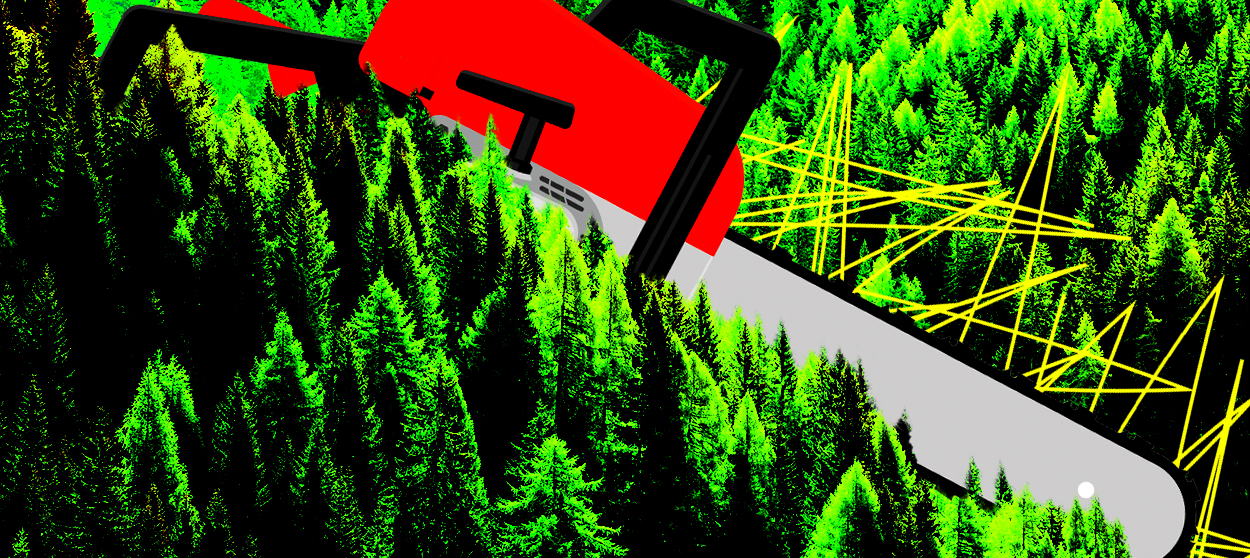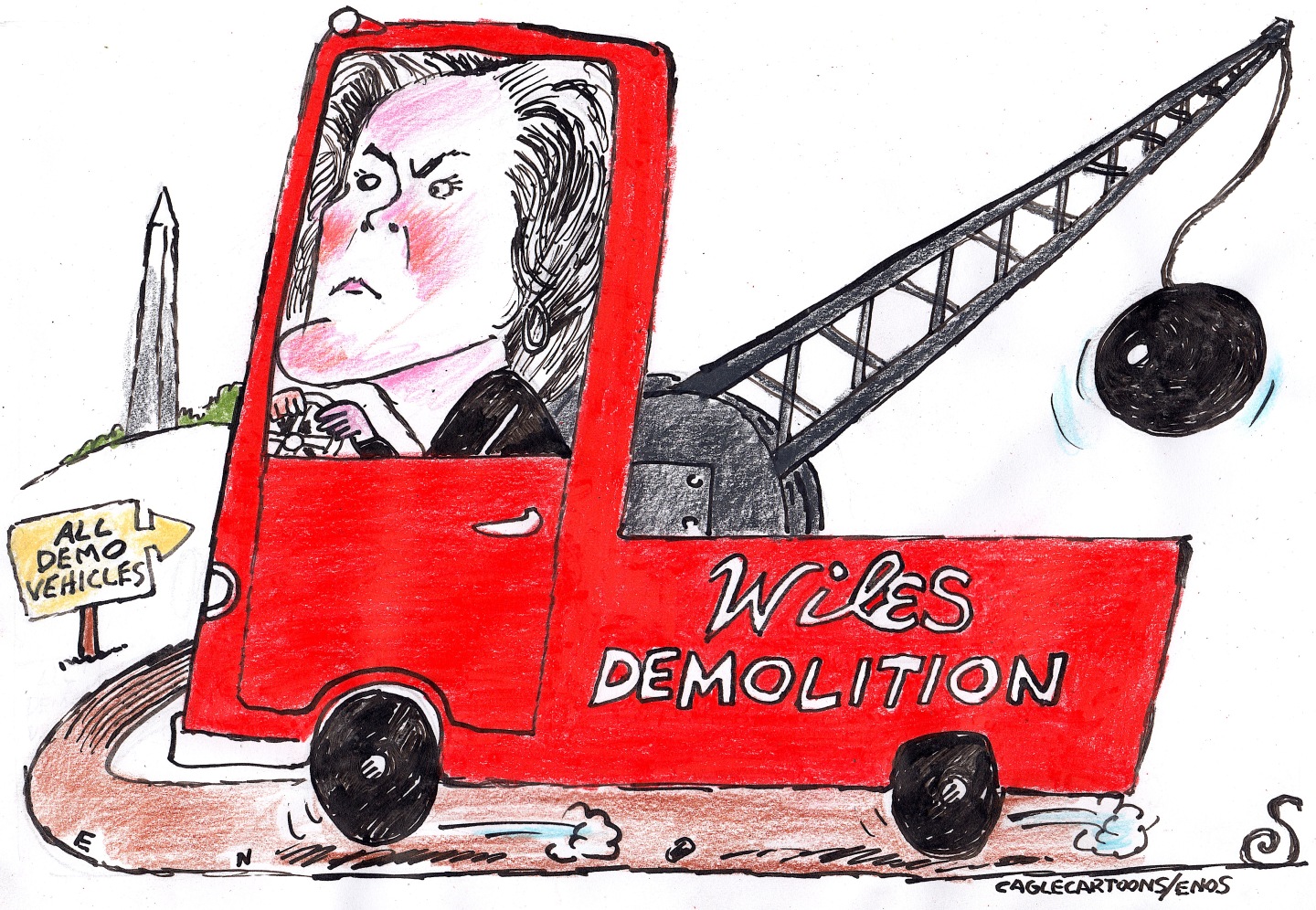America's own rainforest tragedy
Opening up Alaska's temperate rainforests to logging would be unforgivable


You will hear the rain before you feel it. It is a soft, whispery sound, one that could almost be mistaken for wind if not for the occasional percussive plinks that give it away. By the end of the year, the precipitation will total 14 feet, but visiting the forest's understory, you wouldn't know it; the thick Douglas fir canopy shields the ground from most of the downpour. If you closed your eyes, you'd have the distinct sensation of being inside a cloud, except you don't: everything is so vividly green and so wildly alive that just looking at it can break your heart.
Having grown up only a four-hour drive from the Hoh Rainforest on Washington State's Olympic Peninsula, I never took such experiences for granted. There is undeniably something powerful and ancient and, yes, even magical about walking beneath trees 500 years older than Christopher Columbus' claim on finding America. But more than even that, I know how quickly an old growth landscape can be taken away: The drive to Olympic National Park requires first passing through tracts of forest that aren't protected. The open wounds of clear cuts scar the hills around the rainforest a muddy-brown. Bare-limbed snags, left behind by the loggers, jut out of the cuts at random angles and intervals, like shards of mangled bone.
Earlier this week, President Trump instructed his agriculture secretary to look into opening up Alaska's Tongass National Forest to such a fate. It absolutely cannot be allowed to happen.
The Week
Escape your echo chamber. Get the facts behind the news, plus analysis from multiple perspectives.

Sign up for The Week's Free Newsletters
From our morning news briefing to a weekly Good News Newsletter, get the best of The Week delivered directly to your inbox.
From our morning news briefing to a weekly Good News Newsletter, get the best of The Week delivered directly to your inbox.
Washington's Hoh Rainforest is part of a much larger rainforest ecoregion, one that stretches from the northern California coast all the way up through British Columbia and then into the Tongass, in southeast Alaska. It is one of seven temperate rainforest systems in the world, and by far the largest. "There is a great wealth in this district, and that is its timber," Lieutenant Joseph O'Neil told Congress after scouting the Olympic Peninsula in 1890. He added optimistically, "It seems to be inexhaustible."
We know now, crushingly, that it isn't. The Tongass — that 17-million acre northern cousin of the Hoh — is a particularly upsetting testament to the fragility of America's rainforests. At its peak, the Tongass offered up 500 million board feet of lumber a year and employed some 4,000 Alaskans with timber jobs, Christian Science Monitor reports. It wasn't sustainable. Over the past century, more than half the Tongass' virgin forests were ripped out in the pursuit of lumber. "Six decades of predatory logging has imperiled the ecosystem," Larry Edwards, the president of Alaska Rainforest Defenders, told The Guardian in 2018. "The forest can't take any more."
Before leaving office in 2001, President Bill Clinton had barred the construction of new roads in a total of 58.5 million acres of American forests, including more than half of the Tongass, which was effectively sealed off to logging by the decision. While there have been a number of pushes to exempt Alaska from the Roadless Rule over the years, Alaska Sen. Lisa Murkowski (R) has been among the most dedicated modern advocates, turning to Trump for assistance, The Washington Post reports. "The timber industry has declined precipitously, and it is astonishing that the few remaining mills in our nation's largest national forest have to constantly worry about running out of supply," she has said. Trump, for his part, is reportedly "obsessed" with the state's forest policy.
Today, timber provides less than 1 percent of jobs in southeast Alaska, due less to environmental victories than foreign competition, automation, and new building materials. The "last industrial-scale sawmill" in the region, the Viking Lumber Company, has nevertheless insisted it requires a steady supply of Tongass' old growth trees because it "cannot afford to modernize equipment dating from the 1940s to accommodate smaller-radius young and second growth," The Guardian writes.
A free daily email with the biggest news stories of the day – and the best features from TheWeek.com
But we only now are beginning to understand how logging does not mean just the loss of trees like the Sitka spruce, the Western hemlock, and the Alaskan yellow cedar — forest sentries that are already most vulnerable to climate change. Logging also means the loss of what lives beneath them: Sitka black-tailed deer, some 10,000 bald eagles and 7,000 grizzlies, wolves, northern goshawks, the magical all-white Kermode bear. Most critically, the trees provide cover for all five species of Pacific salmon, with 40 percent of those that live off the West Coast spawning in Tongass streams. "The biggest old-growth trees that the timber industry wants are found along streams, and you can't cut them and build logging roads to get them out without hurting the salmon," conservationist Brian McNitt, who believes in responsible logging, told Christian Science Monitor.
As author Richard Powers puts it so poetically in his Pulitzer Prize-winning novel The Overstory, "There are no individuals in the forest, no separable events. The bird and the branch it sits on are a joint thing." We are learning too late, too slow, that there are no individuals on Earth, either, through the destruction of another rainforest a hemisphere away. If the Amazon is the "lungs of our planet," what does it mean for the rest of us if it's on fire, or gone? What happens half the world away has consequences, just as, on a smaller scale, removing a 700-year-old tree on a river might in turn free up deadly silt in a salmon stream.
When dewy-eyed environmentalists speak of all of life existing in harmony with one another, it is no longer just a New Age platitude; it's known science. And you can feel it when you visit America's temperate rainforests: walking under the drooping black branches of a hemlock, your skin dampened by the gentle mist of coastal fog, the overlap of life is palpable. This sensation, this wholeness, is part of why tourism in the Tongass is a $1 billion industry and makes up between 17 and 21 percent of regional employment — far more than the timber trade — attracting millions of visitors a year who want to experience a world that has so carelessly been allowed to slip away elsewhere.
We cannot open up our old-growth rainforests to logging; it is monstrous to even consider when the consequences of corporate greed and short-term industrial nostalgia are playing out violently and irrevocably a hemisphere away. The Tongass must remain protected, so future generations can hear the rain, too.
Jeva Lange was the executive editor at TheWeek.com. She formerly served as The Week's deputy editor and culture critic. She is also a contributor to Screen Slate, and her writing has appeared in The New York Daily News, The Awl, Vice, and Gothamist, among other publications. Jeva lives in New York City. Follow her on Twitter.
-
 5 fairly vain cartoons about Vanity Fair’s interviews with Susie Wiles
5 fairly vain cartoons about Vanity Fair’s interviews with Susie WilesCartoon Artists take on demolition derby, alcoholic personality, and more
-
 Joanna Trollope: novelist who had a No. 1 bestseller with The Rector’s Wife
Joanna Trollope: novelist who had a No. 1 bestseller with The Rector’s WifeIn the Spotlight Trollope found fame with intelligent novels about the dramas and dilemmas of modern women
-
 Codeword: December 20, 2025
Codeword: December 20, 2025The daily codeword puzzle from The Week
-
 Has Zohran Mamdani shown the Democrats how to win again?
Has Zohran Mamdani shown the Democrats how to win again?Today’s Big Question New York City mayoral election touted as victory for left-wing populists but moderate centrist wins elsewhere present more complex path for Democratic Party
-
 Millions turn out for anti-Trump ‘No Kings’ rallies
Millions turn out for anti-Trump ‘No Kings’ ralliesSpeed Read An estimated 7 million people participated, 2 million more than at the first ‘No Kings’ protest in June
-
 Ghislaine Maxwell: angling for a Trump pardon
Ghislaine Maxwell: angling for a Trump pardonTalking Point Convicted sex trafficker's testimony could shed new light on president's links to Jeffrey Epstein
-
 The last words and final moments of 40 presidents
The last words and final moments of 40 presidentsThe Explainer Some are eloquent quotes worthy of the holders of the highest office in the nation, and others... aren't
-
 The JFK files: the truth at last?
The JFK files: the truth at last?In The Spotlight More than 64,000 previously classified documents relating the 1963 assassination of John F. Kennedy have been released by the Trump administration
-
 'Seriously, not literally': how should the world take Donald Trump?
'Seriously, not literally': how should the world take Donald Trump?Today's big question White House rhetoric and reality look likely to become increasingly blurred
-
 Will Trump's 'madman' strategy pay off?
Will Trump's 'madman' strategy pay off?Today's Big Question Incoming US president likes to seem unpredictable but, this time round, world leaders could be wise to his playbook
-
 Democrats vs. Republicans: who are US billionaires backing?
Democrats vs. Republicans: who are US billionaires backing?The Explainer Younger tech titans join 'boys' club throwing money and support' behind President Trump, while older plutocrats quietly rebuke new administration
